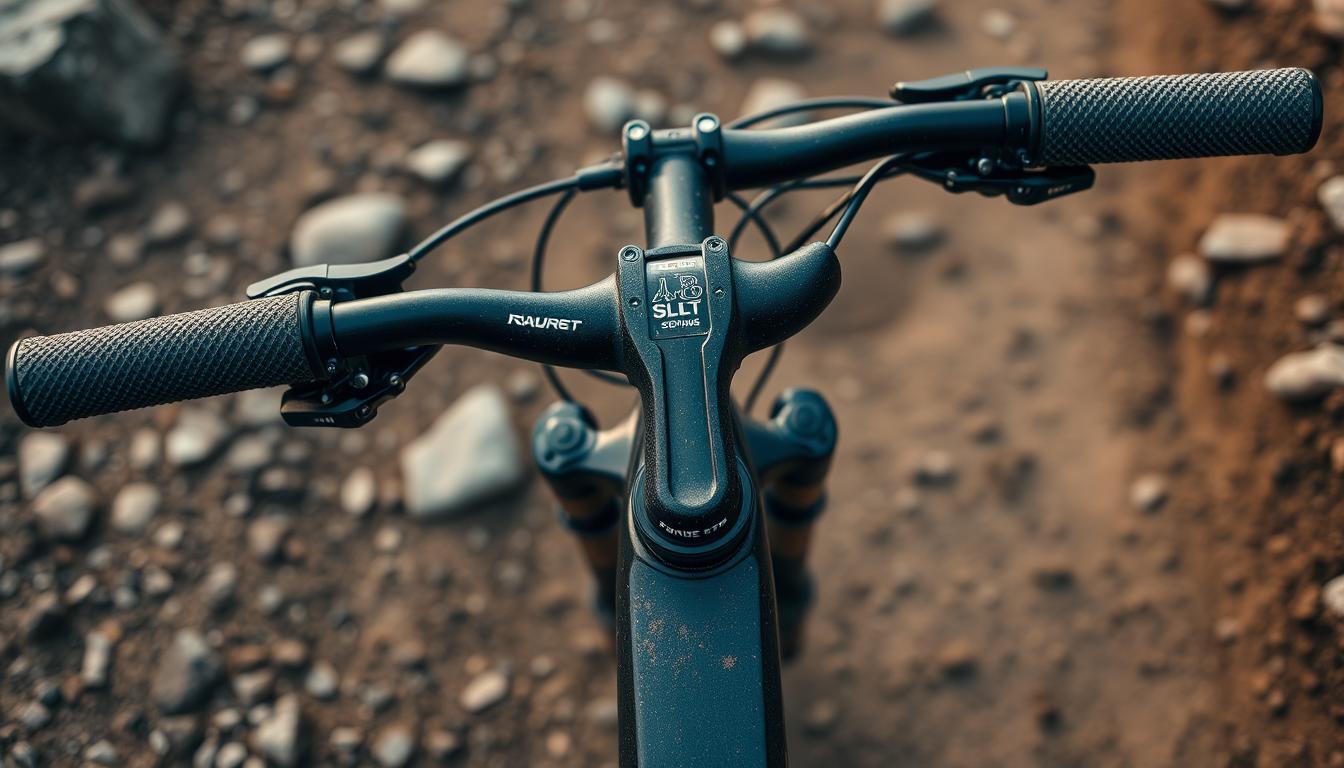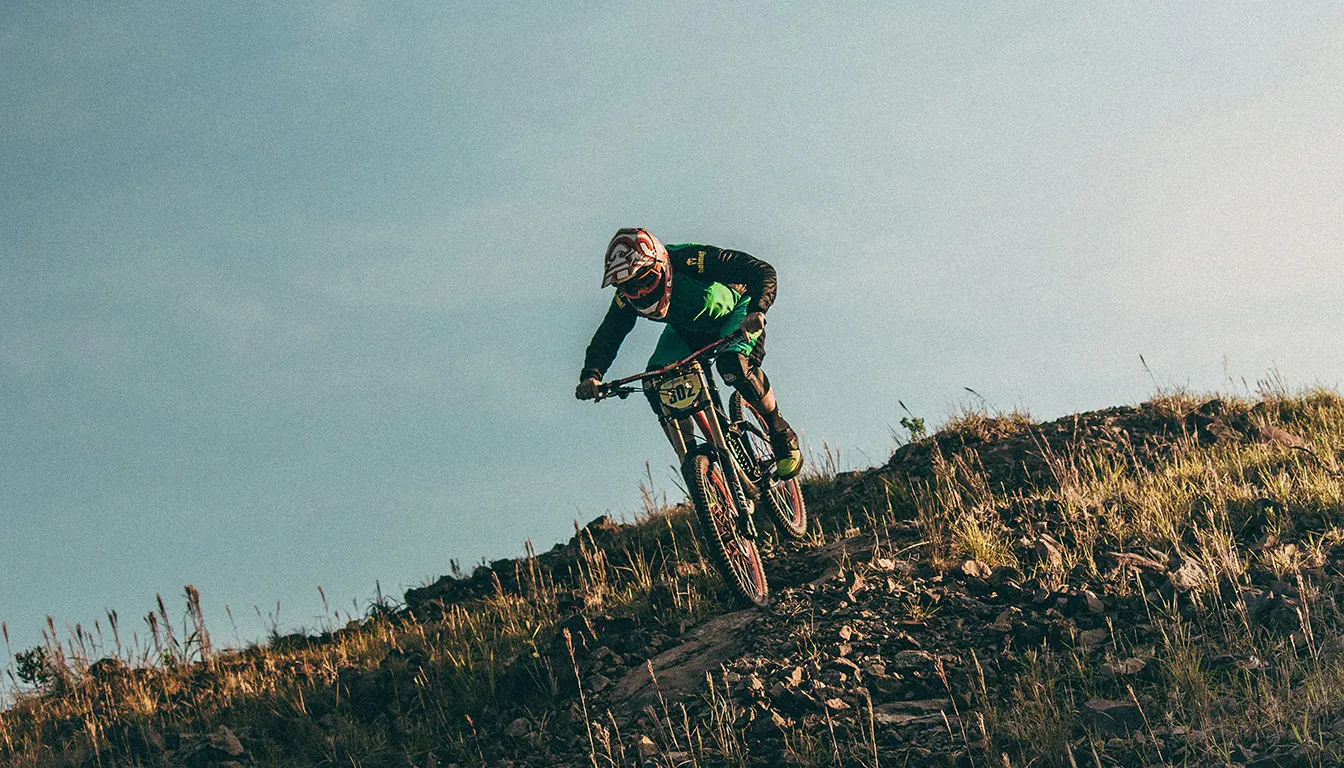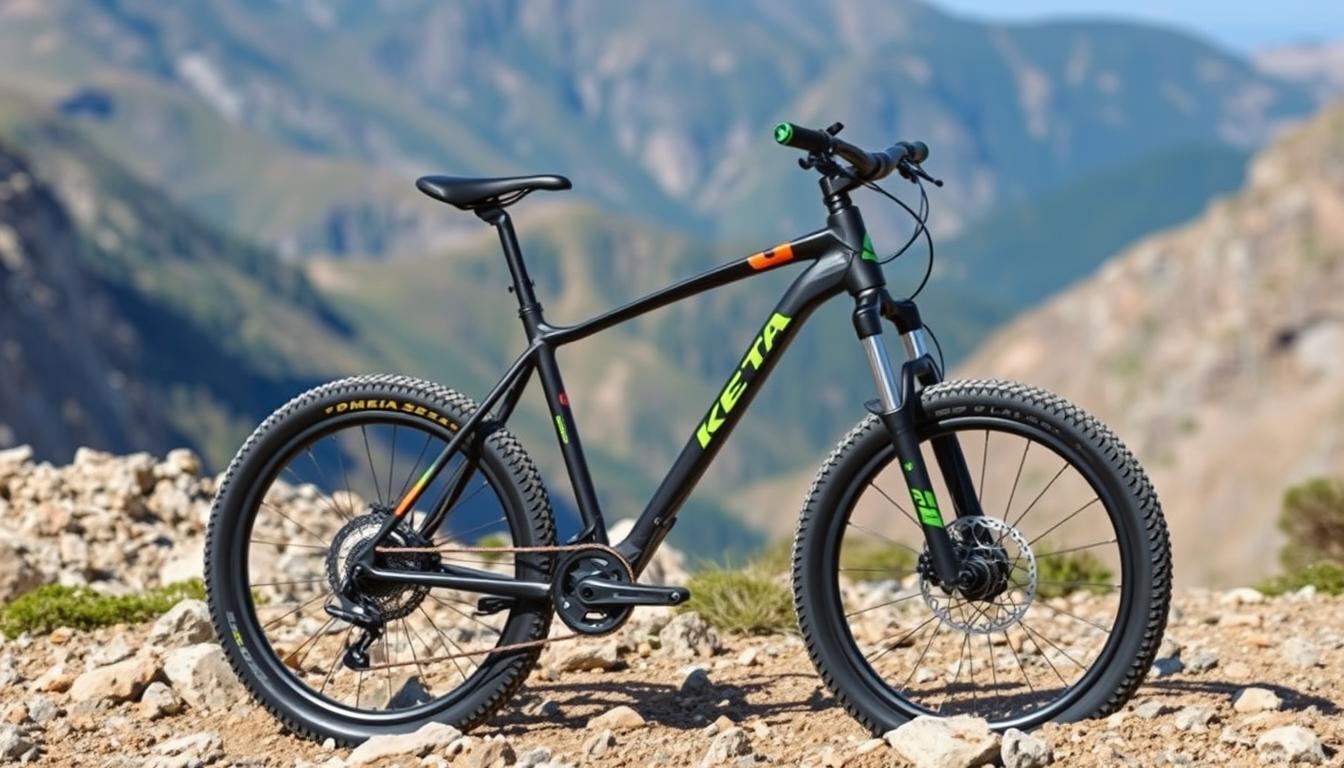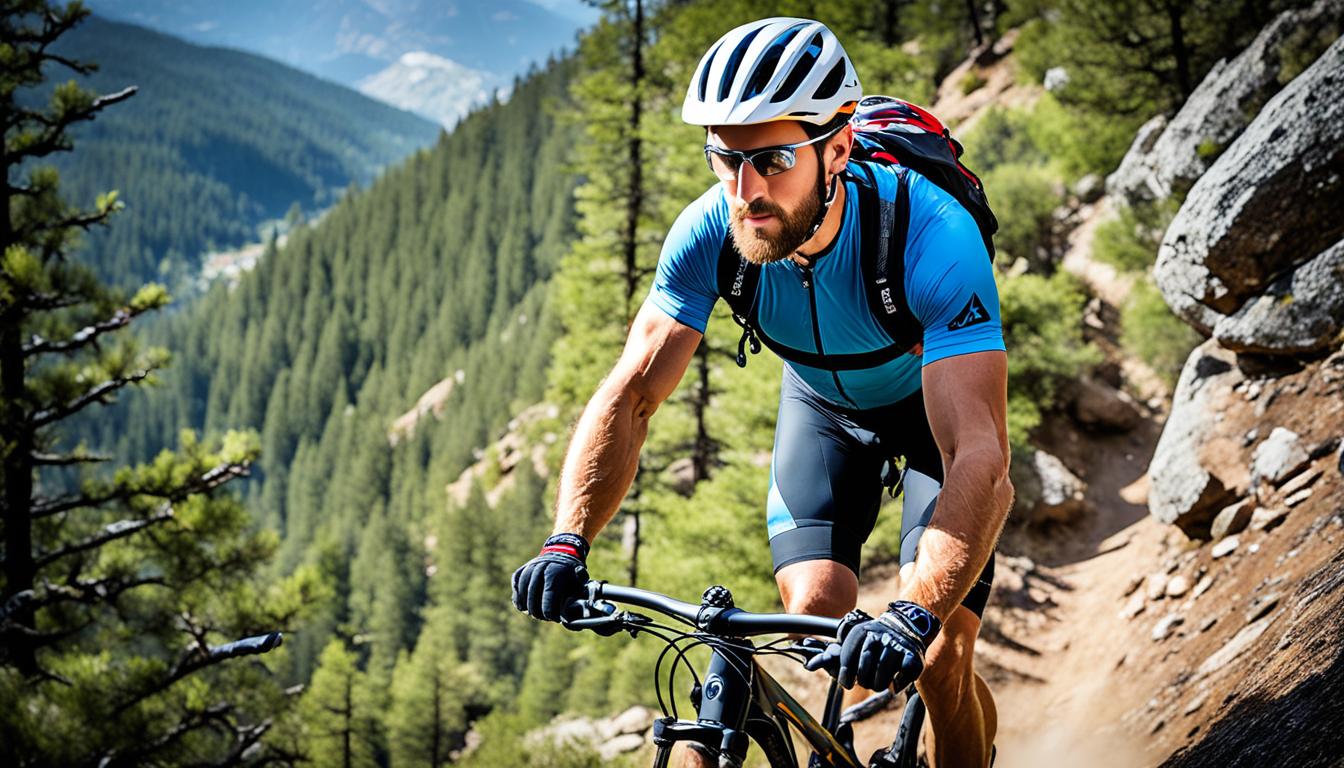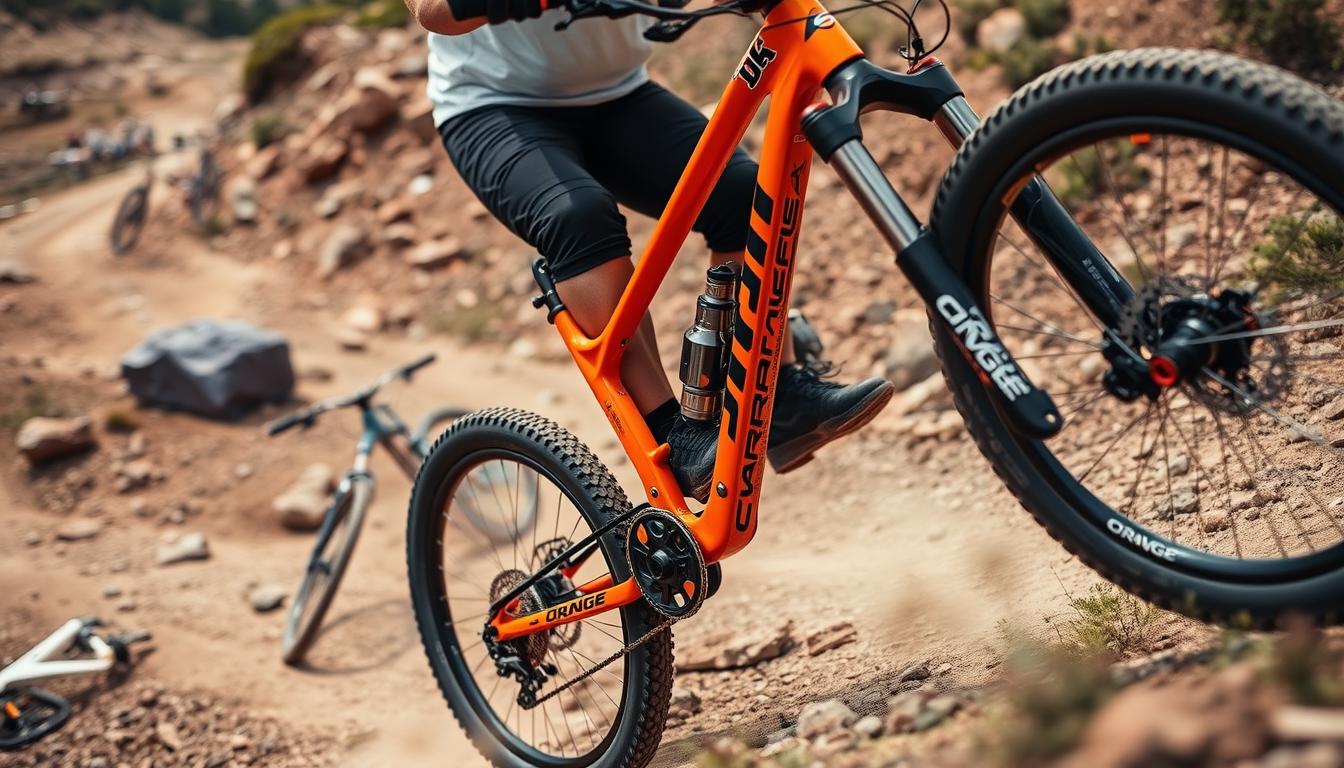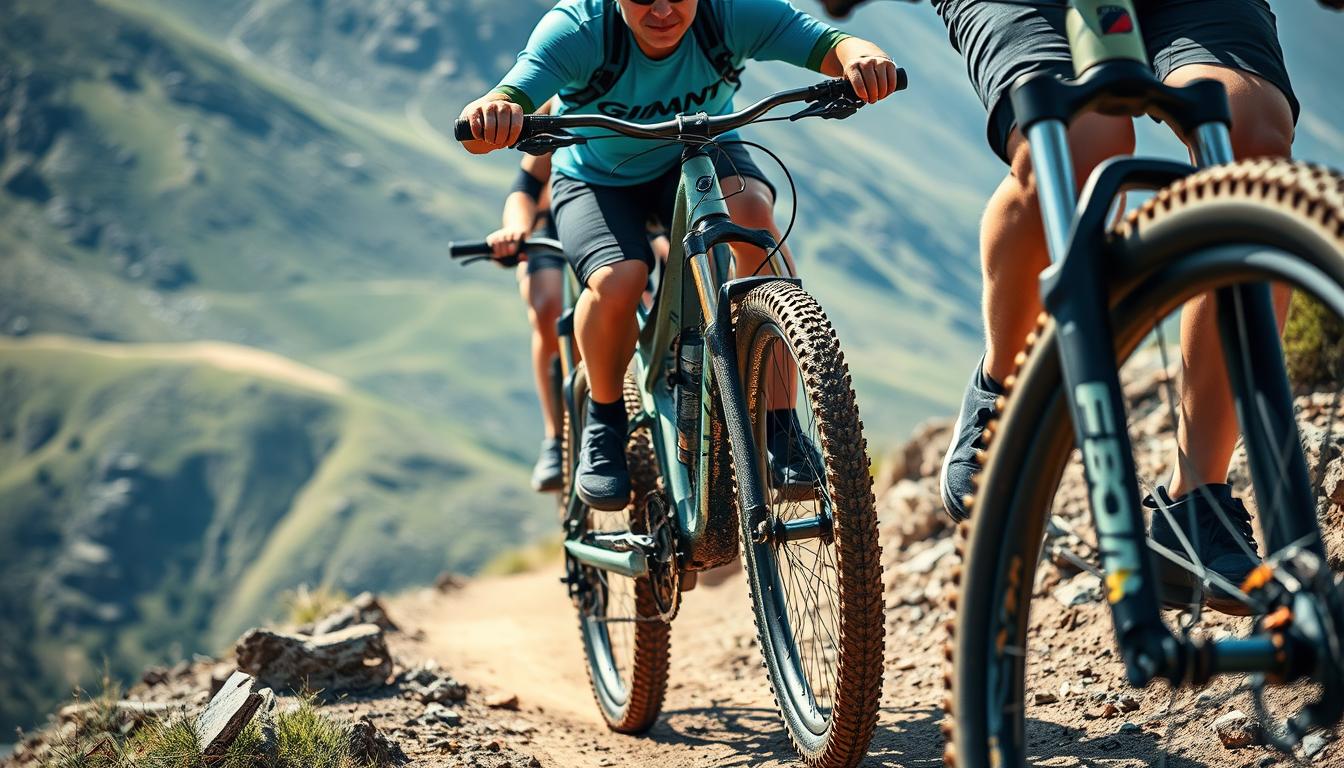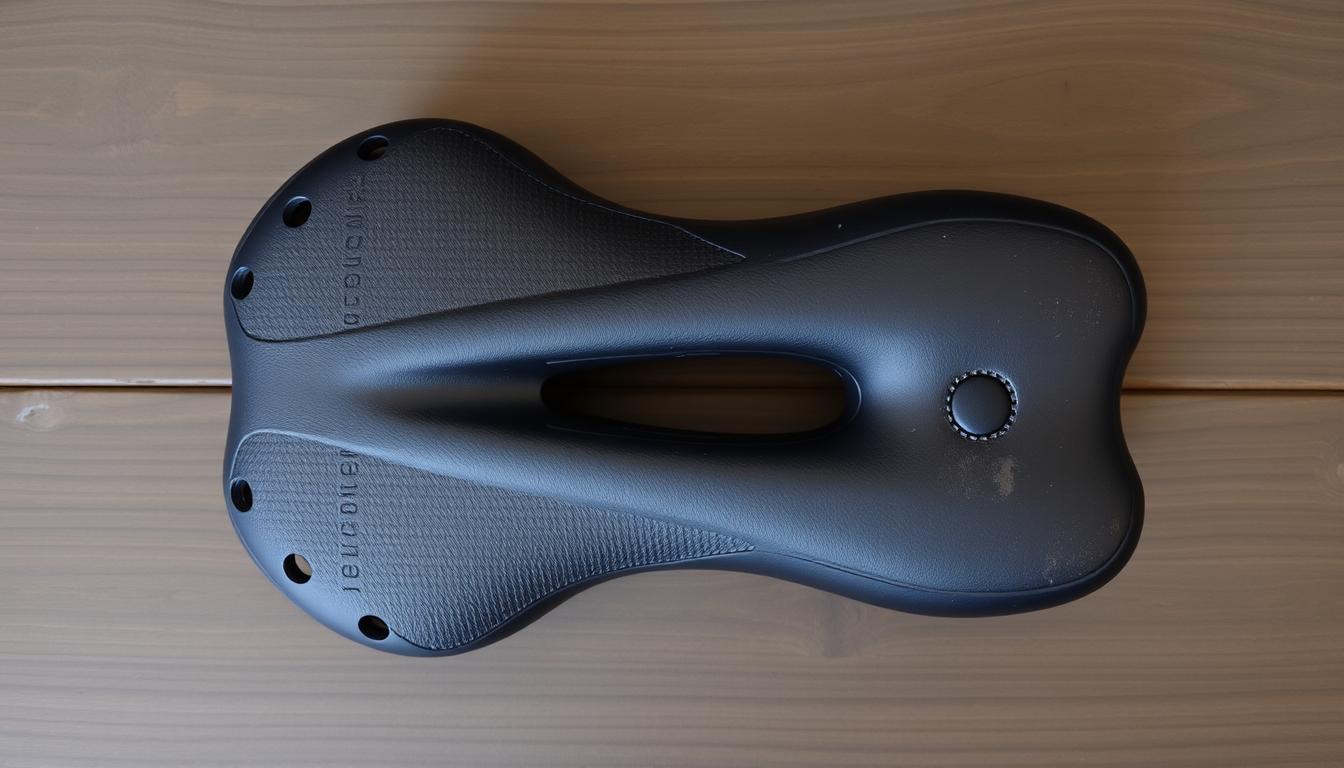Choosing the right mountain bike handlebars boosts your riding comfort and control. It’s key to consider the handlebars’ dimensions, materials, and how they fit with your bike. This guide will help you pick the perfect handlebars for your riding style, from cross-country to downhill.
Understanding Your Riding Style
Your riding style is key to finding the best handlebars for your mountain bike. Riders differ, needing special handlebar designs for better comfort and control. We’ll look into what cross-country, trail, and downhill and enduro riders need. This will help you choose the perfect mountain bike handlebars.
Cross-Country Riders
Cross-country riders often go for light handlebars. They prefer a low rise to keep a forward riding position. This helps distribute weight better when going uphill, making it easier to pedal. A typical handlebar width for cross-country is about 780mm. It’s important to pick handlebars that boost performance for both group riding and solo efforts.
Trail Riders
Trail riders face various terrains, so they need adaptable handlebars. They usually choose wider bars, often over 780mm, for greater control. Their handlebars might have different rises to suit each rider’s comfort and posture. Adjusting the height and sweep of the bar helps find the right mix of comfort and performance.
Downhill and Enduro Riders
Downhill and enduro enthusiasts need handlebars that help control steep drops. Their bars are wider with a higher rise for better positioning on tough trails. A back sweep of 7° to 10° keeps the grip stable, aiding bike handling. They go for setups that boost confidence on harsh terrains, keeping them in charge at full speed.
Knowing your riding style matters when choosing handlebars. For more tips on matching trail difficulty with your skills, see this guideline.
Factors to Consider When Choosing Mountain Bike Handlebars
Choosing the right handlebars for your mountain bike is crucial. It affects how well you control the bike and your comfort on the trails. Knowing what to look for helps you pick the best handlebars for your style.
Handlebar Width
The width of the handlebars impacts your control and bike stability. Most mountain bikes have handlebars between 760mm to 800mm wide. 780mm is the usual choice. Wider handlebars can improve control during technical descents for those who like a more aggressive ride. Brands like ENVE and RaceFace offer various options for different riders and conditions.
Handlebar Rise
The handlebar rise affects your posture by extending upward from where it attaches to the bike. Rises vary from 0mm to 40mm, with 20mm or 30mm being common. Trying out different rises can help you find what works best for your style. It significantly impacts comfort and bike control.
Upsweep and Backsweep
The angles of upsweep and backsweep are key for comfort while riding. Most handlebars have a backsweep angle around 7° to 10°, 8° being most common. This design helps keep your hands comfortable on long rides. Upsweep varies too, letting riders adjust their grip for better comfort and handling.
Materials Used in Mountain Bike Handlebars
The material choice for mountain bike handlebars affects their performance, weight, and durability. Riders often pick between aluminium and carbon handlebars. Each material impacts the cycling experience differently.
Aluminium vs. Carbon
Aluminium handlebars are celebrated for their durability. They stand up to the tough conditions of off-road biking better than carbon ones. While they’re heavier, their reliability makes them a favourite for many cyclists.
Carbon handlebars are lighter and better at reducing vibrations. This makes for a smoother ride, especially on long journeys. They help lessen rider fatigue, making them popular for those prioritizing comfort. Despite their higher price, the performance boost often makes carbon handlebars worth the investment, explained further in this article on carbon versus alloy handlebars for mountain biking enthusiasts.
Long-Term Durability and Cost
From a cost perspective, aluminium handlebars are more wallet-friendly than carbon ones. For instance, the Renthal Fatbar 35 aluminium handlebar costs about $88, a good deal for budget-conscious riders. On the flip side, high-end choices like the Deity Components Speedway 35 Carbon Riser handlebar can go over $180.
Even though carbon handlebars enhance performance, they’re prone to damage from knocks and scratches. This might mean they don’t last as long as aluminium bars. Riders should think about these factors when deciding on handlebars.
Handlebar Geometry and Bike Compatibility
Understanding how handlebar geometry and bike compatibility work together is key to a good ride. Choosing the right handlebars means thinking about the bike’s design and the width of the bars. This choice affects your bike’s handling and stability.
How Bike Geometry Influences Handlebar Choice
Bike design determines the way a bike moves and feels. The angle of the front of the bike and the bike’s size matter for handlebar selection. For example, bikes designed for speed work best with flat handlebars. This helps riders lean forward more. On the other hand, bikes meant for downhill riding fit well with riser handlebars for better stability. And, the size of the bike frames decides if you need wider or narrower handlebars for control or quick moves.
Choosing the Right Diameter
The thickness of the handlebars affects how they perform and feel. There are mainly two sizes available: 31.8 mm and 35 mm. Your choice should match your need for a comfortable grip and how stiff you want the bars to be. The smaller size offers a good mix of lightness and strength. The larger size, however, is stiffer, making it better for those who want more control in tough riding spots. Picking the best diameter is crucial for matching your handlebars to your bike and for a fun ride.
Adjusting Your Handlebar Setup for Optimal Comfort
Getting your handlebar height just right can make a big difference to how comfortable you feel on your mountain bike. A good height helps you control the bike easily and cuts down on aches during long rides. It’s important to think about what works best for your body.
Finding the Right Height
When setting your handlebar height, look at how you fit on the bike. A good starting point is having the top of the handlebars level with or just below the saddle. This position should feel comfy and let your arms relax. If you’re taller, you might need to raise the handlebars to find that sweet spot while sitting or standing. Here are steps to adjust it right:
- Begin with the spacers under the stem, moving them in 10-20mm steps.
- Go for a quick ride after each adjustment to see how it feels.
- Check your handlebars’ angle, aiming for a slight upward tilt for a solid grip and control.
Trial and Error: Experimentation with Measurements
Getting your handlebars perfect can take some tweaking. Trying different settings can help you find what suits your body and riding style best. Things to adjust include:
- Handlebar width, to keep your hands a shoulder’s width apart on the grips when in a natural position.
- The reach to your handlebars, with racers often preferring 120–140 millimetres for comfort.
- The handlebars’ angle, aiming for a 90-degree angle between your torso and upper arm for comfort.
Making your setup comfy allows for longer rides without feeling tired. Keep tweaking and measuring to get the perfect balance between control and ease on the trails.
Conclusion
Choosing the right mountain bike handlebars is vital for a great ride and comfort. Knowing your riding style helps pick the best handlebars. It ensures their design, width, and materials meet your needs. Handlebar rise, upsweep, backsweep, and bike geometry compatibility are key.
If you prefer lightweight carbon handlebars for climbs, or tough aluminium ones for rugged trails, each type has its pros and cons. Finding the right width is also crucial. It helps you control your bike better on different terrains. Generally, wider handlebars improve stability on descents, and narrower ones offer quick moves on tight paths.
You should try out different setups to find what works for you. Considering handlebar shape and size, and checking for wear and alignment, will boost your comfort and riding skills. The right handlebar choice can make your mountain biking experience much better.
FAQ
How do I choose the right mountain bike handlebars for my riding style?
The best handlebars match your riding type. Whether you love cross-country, trail, or downhill. Key features to look at include width, rise, and shape. These ensure they fit your style perfectly.
What impact does handlebar width have on my riding experience?
Handlebar width changes how you control the bike and your comfort. Wider handlebars help with stability. This is great for downhill riding. Narrower ones boost agility for cross-country adventures.
Are aluminium handlebars better than carbon handlebars?
Aluminium handlebars cost less and last longer. Carbon handlebars are lighter and soak up road vibrations better. Your choice should depend on how much you want to spend and what performance you prefer.
How does bike geometry affect handlebar selection?
Bike geometry is key in picking handlebars. Your bike’s shape may need certain widths and rises for the best ride. It’s all about handling, comfort, and matching your style.
What is the best way to adjust my handlebars for comfort?
To adjust handlebar height for comfort, try different settings. See how each change affects your posture. Your arms should be a bit bent when you hold the handlebars.
How do upsweep and backsweep influence my handlebar choice?
The upsweep and backsweep angles of handlebars influence wrist comfort and control. Tweaking these can ease fatigue and enhance bike handling. It’s all about finding what feels right for you.
What diameter handlebars should I choose for my bike?
Your handlebars’ diameter must fit the bike stem’s clamp size. The common sizes are 25.4mm, 31.8mm, and 35mm. Remember to check your bike’s specs before you buy.
